To install an electric hot water heater, you need to turn off the power supply, disconnect the plumbing connections, remove the old heater, install the new one, reconnect the plumbing, and finally, turn on the power supply and test the system. Installing a hot water heater may seem like a daunting task, but with the right guidance and a little bit of know-how, it can be a straightforward process.
Whether you’re replacing your old unit or setting up a new one, this guide will walk you through the steps to install an electric hot water heater. By following these instructions, you’ll have a functioning and efficient hot water system in no time.
So, let’s get started!
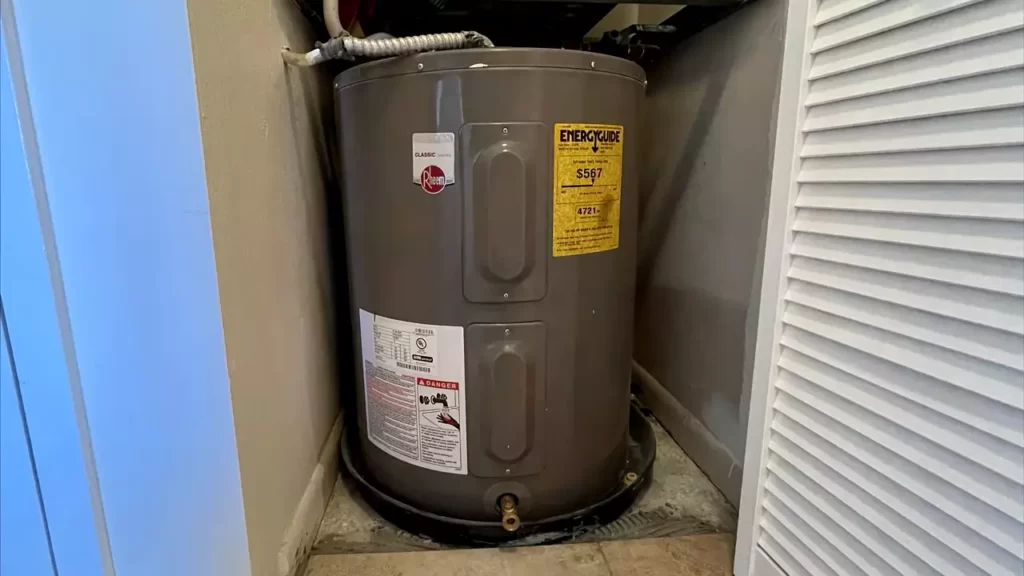
Preparation For Installation
Before installing a hot water heater electric, proper preparation is essential to ensure a smooth and successful installation. This includes gathering the necessary tools and materials, selecting the appropriate location, and measuring and preparing the space. By following these steps, you can lay the foundation for a reliable and efficient hot water heater system.
Gathering the necessary tools and materials
Prior to beginning the installation process, it is crucial to gather all the required tools and materials. This will ensure that you have everything you need at hand, saving you time and avoiding delays during the installation. Here is a list of the essential tools and materials:
| Tools | Materials |
|---|---|
| Adjustable wrench | Hot water heater |
| Pipe cutter | Pipes and fittings |
| Tape measure | Compression fittings |
| Pipe wrench | Teflon tape |
| Screwdriver | Electrical connectors and cables |
| Plumber’s tape | Pressure relief valve |
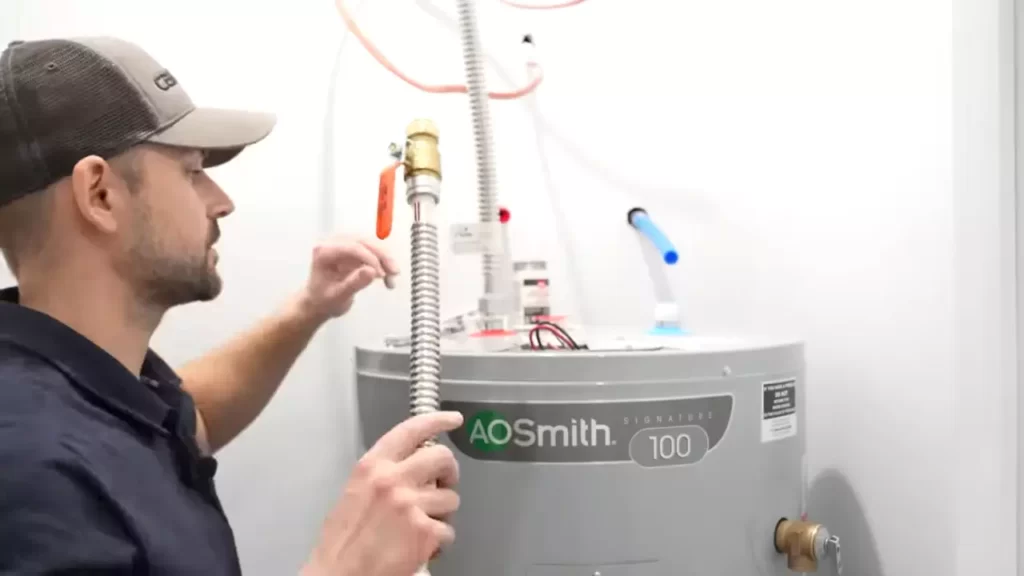
Selecting the appropriate location for installation
Choosing the right location for your hot water heater electric is crucial for its proper functioning. Here are some key factors to consider:
- Accessibility: Ensure that the location allows easy access for future maintenance and repairs.
- Space: The hot water heater should have sufficient space around it to accommodate proper ventilation and air circulation.
- Water and power supply: Position the heater close to the existing hot water and electrical supply lines to minimize installation complexity.
- Drainage: Select a location where there is a suitable drain nearby for any potential leaks or condensation.
- Building codes: Comply with local building codes and regulations regarding the installation of hot water heaters.
Measuring and preparing the space
Before proceeding with the installation, measure the designated space to ensure that it can accommodate the hot water heater properly. Follow these steps:
- Measure the height, width, and depth of the available space.
- Consider any clearance requirements from walls, ceilings, and obstructions.
- Remove any obstacles or debris that may hinder the installation process.
- Ensure that the area is clean and free from any potential hazards or combustible materials.
By meticulously preparing the space, you can create a safe and suitable environment for the hot water heater electric.
Disconnecting And Removing The Old Water Heater
When it comes to installing a new hot water heater, the first step is disconnecting and removing the old water heater. This process involves several important steps to ensure a safe and efficient installation. Follow our guide below to learn how to disconnect and remove your old water heater.
Turning off the power and shutting off the water supply
The very first step in disconnecting and removing your old water heater is to turn off the power and shut off the water supply. This is crucial for safety reasons and to prevent any water damage during the removal process. Here’s how you can do it:
- Locate your home’s circuit breaker or fuse box and find the breaker or fuse that controls the power supply to the water heater. Turn off the breaker or remove the fuse to cut off the power.
- Next, shut off the water supply to the water heater. Look for the main shut-off valve, usually located near the water meter or where the water line enters your home. Turn the valve clockwise to shut off the water flow.
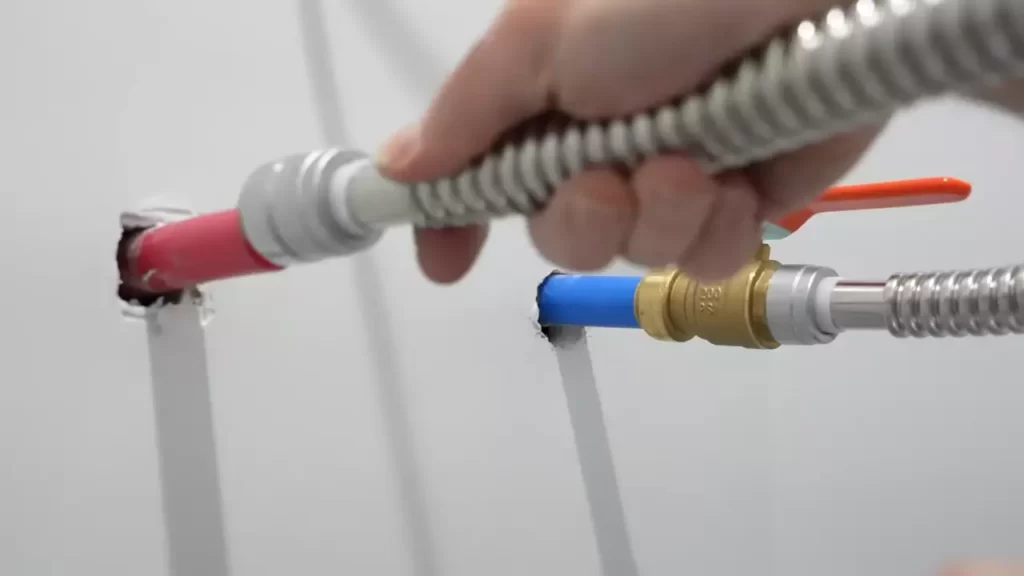
Draining the water heater
After turning off the power and shutting off the water supply, it’s time to drain the water heater. Draining the tank will reduce the risk of water leakage during the removal process. Follow these steps:
- Attach a garden hose to the drain valve located at the bottom of the water heater. Make sure the other end of the hose is placed in a suitable drainage area.
- Open the drain valve carefully by turning it counterclockwise. Allow the water to flow out through the hose until the tank is completely empty.
- Once the water heater is drained, close the drain valve by turning it clockwise.
Disconnecting the electrical and plumbing connections
Now that the water heater is drained, it’s time to disconnect the electrical and plumbing connections. This step requires caution and the proper tools. Follow these steps:
- For electrical connections, locate the electrical junction box on the side of the water heater. Remove the cover plate, and using a screwdriver, disconnect the wires from the heating element or thermostat. Cover the exposed wires with wire nuts for safety.
- For plumbing connections, use a pipe wrench to disconnect the hot water outlet pipe and the cold water inlet pipe from the water heater. Wrap the exposed ends of the pipes with a towel to catch any remaining water.
Removing the old water heater from its location
With the electrical and plumbing connections disconnected, it’s time to remove the old water heater from its location. Here’s how to do it safely:
- Enlist the help of a friend or family member to assist with lifting and carrying the water heater.
- Using caution and proper lifting techniques, carefully lift the old water heater off its stand or platform.
- Move the water heater to a suitable location for disposal or storage.
Now that you’ve successfully disconnected and removed the old water heater, you’re ready to move on to the next steps in installing your new hot water heater. Stay tuned for our upcoming blog post on how to install a hot water heater electric!
Installing The New Water Heater
Once you have removed the old water heater, it’s time to install the new one. Proper installation is crucial to ensure the optimal performance and longevity of your hot water heater. This section will guide you through the steps involved in installing a new electric water heater.
Positioning the new water heater in the desired location
The first step in installing your new water heater is determining the right location for it. Choose a spot that allows for easy access and meets the necessary clearances specified by the manufacturer. Keep in mind that the water heater should be installed on a stable surface that can support its weight.
Here’s a step-by-step guide to positioning your new water heater:
- Choose a level area.
- Ensure there is ample space around the heater for maintenance and repairs.
- If you are installing the heater in an attic, garage, or any other unconditioned space, consider using an insulation blanket to improve energy efficiency.
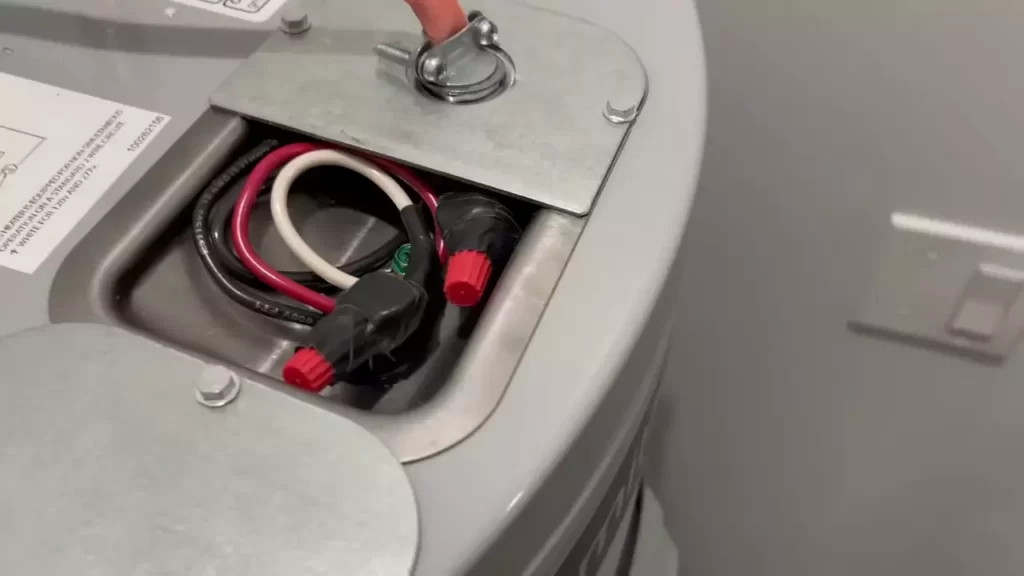
Connecting the plumbing connections
Now that you have positioned the water heater, it’s time to connect the plumbing connections. This ensures a proper flow of water to and from the heater. Here’s what you need to do:
- Attach the cold water supply line to the inlet fitting on top of the water heater.
- Connect the hot water outlet pipe to the appropriate fitting on top of the water heater.
- Use pipe joint compound or plumber’s tape to ensure watertight connections.
Installing the pressure relief valve and drain pipe
The pressure relief valve is an important safety feature that prevents the water heater from building up excessive pressure. Here’s how you can install it:
- Screw the pressure relief valve into the designated opening on top of the water heater.
- Connect the drain pipe to the valve’s discharge outlet.
- Ensure the drain pipe is directed towards a suitable drain or outside area.
- Confirm that the pressure relief valve is properly functioning by testing it after the water heater is filled.
Connecting the electrical wiring
Connecting the electrical wiring is a critical step in installing an electric water heater. Follow these steps to ensure a safe and proper connection:
- Make sure the power to the water heater is switched off at the circuit breaker or fuse box.
- Remove the terminal cover on the side of the water heater to access the electrical connections.
- Connect the electrical wires according to the manufacturer’s instructions, making sure to match the wire colors.
- Tighten the wire connections securely and replace the terminal cover.
Filling and testing the new water heater
With all the connections in place, it’s time to fill and test the new water heater. Here’s how you can do it:
- Open the cold water supply valve to allow water to flow into the heater.
- Check for any leaks around the plumbing connections.
- Once the tank is full, turn on a hot water faucet to allow air to escape from the system.
- Switch on the power to the water heater at the circuit breaker or fuse box.
- Wait for the water to heat up, and then test the hot water throughout your home to ensure proper functioning.
Following these steps will help you successfully install a new electric water heater. Enjoy a reliable and efficient hot water supply in your home!
Additional Considerations
When installing a hot water heater electric, there are a few additional considerations that you need to keep in mind. These considerations go beyond the basic installation process and are important for both safety and efficiency.
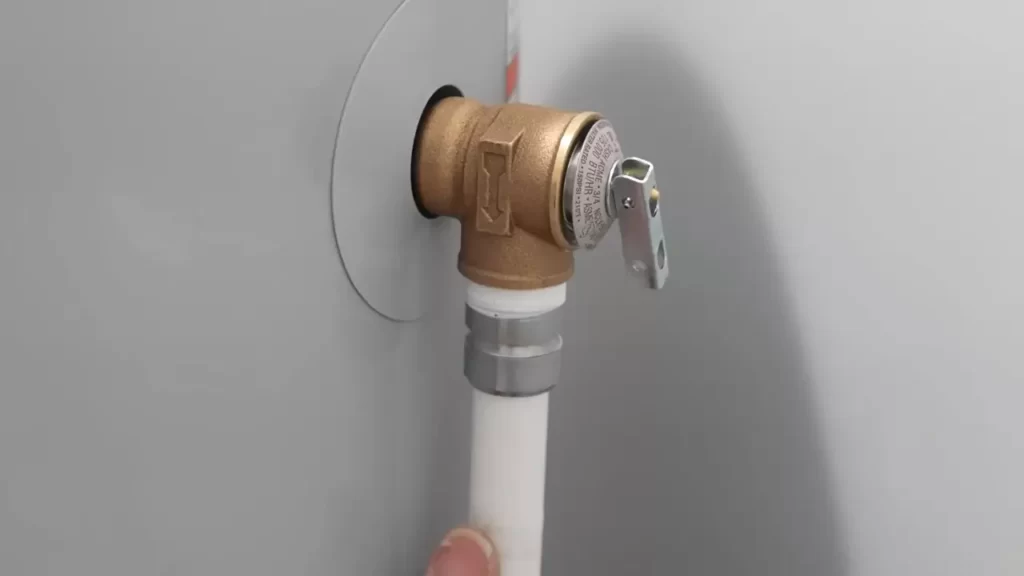
Proper insulation and ventilation for safety and efficiency
Proper insulation and ventilation are crucial when it comes to the installation of a hot water heater electric. Insulating the pipes and tank can help to prevent heat loss and improve overall energy efficiency. This is especially important if your hot water heater is located in an unheated space such as a basement or garage.
Insulation materials such as foam pipe insulation and water heater blankets can be easily installed and are highly effective in minimizing heat loss. By reducing heat loss, you can not only save money on your energy bills but also extend the lifespan of your hot water heater. Be sure to check the manufacturer’s guidelines and specifications to choose the appropriate insulation materials for your specific model.
In addition to insulation, proper ventilation is essential for the safe and efficient operation of your hot water heater electric. Adequate airflow is necessary to prevent the buildup of harmful gases such as carbon monoxide. It is crucial to follow the manufacturer’s recommendations for ventilation requirements, including the placement and size of vents.
Regular maintenance and troubleshooting tips
To ensure the longevity and optimal performance of your hot water heater electric, regular maintenance is key. Here are some maintenance and troubleshooting tips to keep in mind:
- Flushing the tank: Over time, sediment buildup can occur in the tank, affecting the efficiency and lifespan of your hot water heater. Regularly flushing the tank helps remove the sediment, ensuring smooth operation.
- Checking the pressure relief valve: The pressure relief valve is a safety feature that releases excess pressure from the tank. It is important to test this valve periodically to ensure it is functioning properly.
- Inspecting electrical connections: Regularly check the electrical connections of your hot water heater to ensure they are secure and free from any corrosion or damage.
- Monitoring water temperature: Set your hot water heater to the appropriate temperature, typically between 120 to 140 degrees Fahrenheit, to prevent scalding and increase energy efficiency.
- Addressing leaks promptly: If you notice any leaks, it is essential to address them immediately. Leaks can lead to water damage and further complications if left unattended.
By following these maintenance and troubleshooting tips, you can keep your hot water heater electric running smoothly and efficiently for years to come.
Remember, proper insulation and ventilation are important for both safety and efficiency. Additionally, regular maintenance and troubleshooting can help ensure the optimal performance and longevity of your hot water heater electric. By considering these factors and following the manufacturer’s guidelines, you can install and maintain your hot water heater with confidence.
Frequently Asked Questions Of How To Install A Hot Water Heater Electric
Can I Install An Electric Water Heater Myself?
Yes, you can install an electric water heater yourself as long as you follow the manufacturer’s instructions and local building codes. However, it’s recommended to hire a professional plumber for safe and efficient installation.
Do Electric Water Heaters Need Special Wiring?
Electric water heaters do require special wiring due to their high power consumption. It is essential to have an appropriate electrical circuit and wiring installed to ensure the safety and efficient operation of the water heater. Consulting a professional electrician is recommended to ensure compliance with electrical codes and regulations.
Is It Easy To Install a Water Heater Yourself?
Installing a water heater yourself can be challenging. It requires plumbing knowledge and skills. You may need to handle electrical connections and follow safety guidelines. It’s recommended to hire a professional plumber for proper installation to avoid potential risks or damage.
What Are The Electrical Requirements For Electric Hot Water Heater?
The electrical requirements for an electric hot water heater vary, but generally, you will need a dedicated circuit with a specific voltage and amperage rating. It’s important to consult the manufacturer’s specifications and have a licensed electrician install the necessary wiring.
Conclusion
Installing an electric hot water heater may seem intimidating, but with the right steps, it can be a straightforward process. By following this guide, you can confidently install your own hot water heater and ensure an efficient and reliable supply of hot water in your home.
Remember to always prioritize safety and consult a professional if you encounter any difficulties. With a little patience and careful attention to detail, you’ll have your hot water heater up and running in no time. So, get ready to enjoy the comforts of a warm and relaxing shower whenever you need it!
